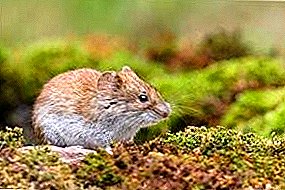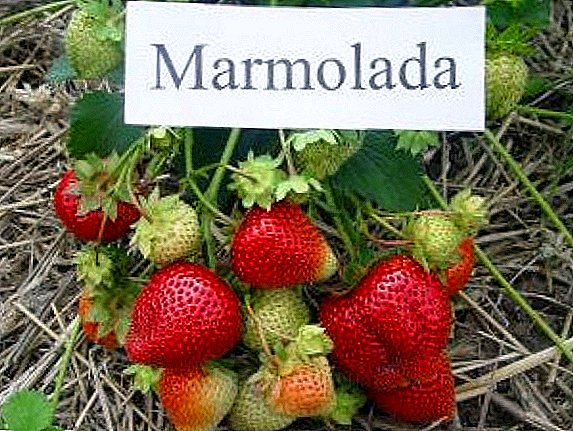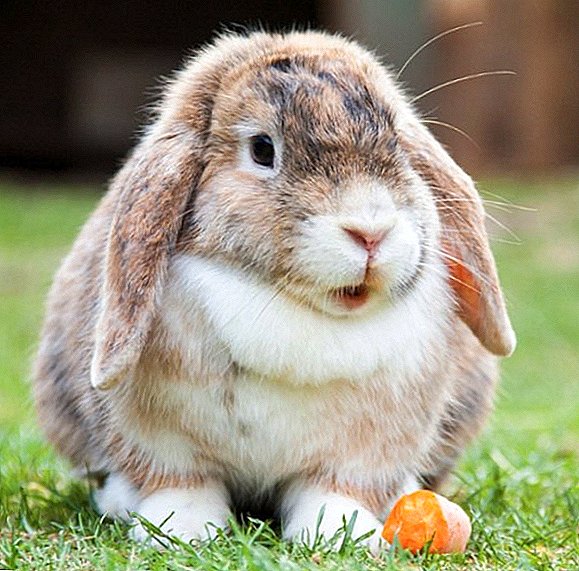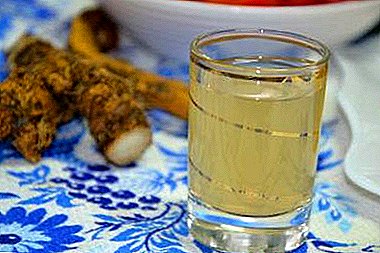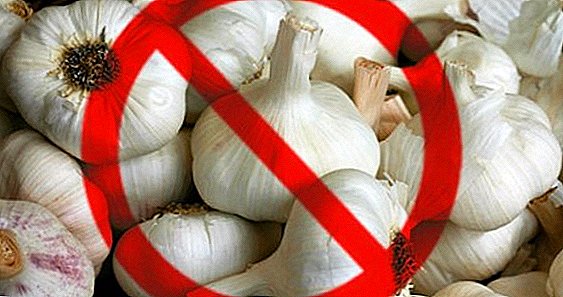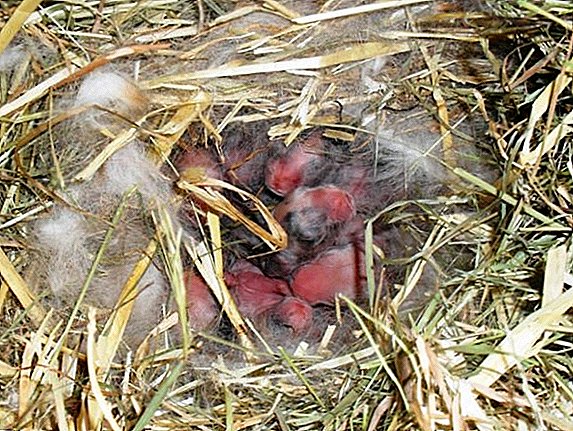 Sometimes the rabbit bosses face, it would seem, an inexplicable situation: immediately after the rabbit has been around, kept in normal conditions, suddenly begins to scatter the newborn babies. Rejected rabbit in this case often die. Consider the factors that can lead to such illogical behavior of the animal.
Sometimes the rabbit bosses face, it would seem, an inexplicable situation: immediately after the rabbit has been around, kept in normal conditions, suddenly begins to scatter the newborn babies. Rejected rabbit in this case often die. Consider the factors that can lead to such illogical behavior of the animal.
Features of the birth process
As a rule, childbirth occurs at night or in the morning. The whole process lasts from 10 minutes to one hour. No outside assistance is required. 
After giving birth, the female usually eats the afterbirth, licks the babies and proceeds to their feeding.
Did you know? The world's longest rabbit is the representative of the breed Flemish giant (another breed name Flandre) named Darius, living in the UK. The length of his body is 129 cm.
Why does the rabbit throw rabbits
The atypical behavior of the rabbit after giving birth, when instead of feeding, the rabbits scatter them around the cage, and in some cases show aggression towards them, may have various reasons, which we shall examine in more detail.
Mastitis
One of the most common causes of spreading baby rabbits is mastitis - an inflammation of the mammary gland in the female, causing her painful sensations, which leads to the rejection of the feeding of cubs. In the initial stage of mastitis, some diseased nipples of the females turn red and swell, they feel hardened and compacted by touch.  The animal at the same time demonstrates a lack of appetite and is thirsty, besides it has an increased body temperature. The behavior of the female changes, she may fall into apathy or become too active.
The animal at the same time demonstrates a lack of appetite and is thirsty, besides it has an increased body temperature. The behavior of the female changes, she may fall into apathy or become too active.
The causes of mastitis are varied:
- wound infection;
- stagnation of milk, which may be caused by too few offspring;
- endocrine disorders in the body;
- hypothermia
Find out when to let the rabbit on the mating, how to determine the rabbit suckering and how to feed the nursing rabbit after bout.
Poor feeding
Lack of vitamins and minerals can adversely affect the behavior of the female, especially in the postpartum period. Because of the unbalanced diet, the bunny becomes too excitable and overly shy.
Often, it then begins to equip the nest, then actually ruins it, simultaneously throwing out rabbits from it. In addition, the poor quality of the feed adversely affects the amount of milk produced, which may lead to the failure of the female to feed the cubs.
Important! If, during the period of the hunt and after, the female suffers from thirst, then she may well simply eat her own cubs, thus replenishing the necessary amount of fluid in her body.
Incorrect content
Problems with scattering baby rabbits can occur due to animal welfare conditions. Here the key factor is the equipment of the mother liquor.  The following reasons usually lead to inappropriate behavior of the rabbit:
The following reasons usually lead to inappropriate behavior of the rabbit:
- the mother liquor is not protected by the frontal opaque wall;
- there is too little hay in it for arranging the nest, which is why the rabbit, trying to deepen the nest, scrubs the floor, at the same time scattering rabbits;
- the female is placed in a new cage for 2-3 weeks before okolom, which categorically can not be done, because she simply does not have time to equip the nest;
- all sorts of cracks and fissures in the mother liquor, which are clogged with mud and feces, which increases the risk of the disease of the female, including mastitis;
- too low temperature in the mother liquor;
- the same negative effect gives excessive heat, coupled with stuffiness.
Metabolic problems
As a result of metabolic disorders in rabbits, there are various diseases that sometimes lead to inappropriate behavior. These can be osteodystrophies (mainly bones are affected) or hypovitaminosis (lack or poor absorption of vitamins), obesity.  They are common among females during pregnancy and lactation. Animals suffering from similar diseases may refuse to raise offspring.
They are common among females during pregnancy and lactation. Animals suffering from similar diseases may refuse to raise offspring.
Stress
External irritants can affect the behavior of the rabbits: a running engine, noise of repair work, penetration into the cage of rats, dogs barking, etc. All this makes them nervous and can provoke a little rabbit to scatter. The situation when the owners often touch the cubs or take them in their hands can lead to the same result.
This can discourage the natural smell of the rabbits, and the mother simply does not recognize them. In some cases, the stress state in the female is in no way connected with external stimuli, but is caused by an innate mental disorder in the animal. This situation cannot be rectified, such females are usually simply not allowed to mating. 
Female hunt
This state of readiness for mating occurs in the rabbit almost immediately after it has been cleared, but it provokes the presence of a male in close proximity to scattering offspring, for example, behind the wall of the compartment. In this case, the female is overly excited and very often scatters rabbits. In this situation, the breeders advise after an embrace for some time to plant an excited female to the male, after which she will quickly return to normal.
First okrol
Another reason for the failure of the female to feed her cubs is her age. Too young females-first years may not yet have a maternal instinct, which ends sadly for newborn babies. In most cases, the second time there are no such problems.
Did you know? In the wild, rabbits usually live one to two years and most often become victims of predatory animals or hunters. However, in captivity, their life expectancy increases significantly. So, the Australian rabbit caught in the wild, named Flops, became a long-time record holder. With his masters he lived for 18 years and almost 11 months.
What to do in this case
In a situation where the rabbit does not care about their offspring, there are a number of ways to save this offspring from death. Consider these ways.
Force feeding
In the case of scattering rabbits, you can try to awaken the maternal instinct in the rabbit or force it to feed offspring.  To do this, perform the following actions:
To do this, perform the following actions:
- the rabbit is temporarily placed in another cage;
- scattered rabbits collected in the mother liquor, while using disposable gloves;
- bunnies gather their down, with its lack they pinch it from the belly of a female;
- gathered rabbit wrapped rabbits from all sides;
- after 20-30 minutes, when extraneous odors weaken, the rabbit is placed in the mother liquor;
- for feeding the babies, the female is kept on the side, the rabbit is applied to the nipples.
Check out the best meat, decorative and downy breeds of rabbits.
Before applying newborns to the mother, it is necessary to gently, with a damp cloth, massage their tummies in the direction of the excretion organs so that waste products can come out, since at first they are not able to do this on their own. Rabbits are applied to the nipples once a day for about 15 minutes.
Hook up to another rabbit
A good option to save baby rabbits is to sit down to another female.  In order for a replenishment to occur successfully, it is necessary to consider several factors:
In order for a replenishment to occur successfully, it is necessary to consider several factors:
- the number of baby rabbits should not exceed the number already fed;
- a young female after the first rounding, as a rule, is capable of feeding no more than 8 cubs, and a more mature one - up to 12 young rabbits;
- The highest probability of successful replanting exists when the age difference between the transplanted and fed baby rabbits does not exceed 3-4 days, although successful replanting is also possible with a difference in the age of up to one and a half months.
The very procedure of sitting down baby rabbits is performed as follows:
- hands thoroughly wash or wear disposable gloves;
- temporarily transfer the feeding female to another cell;
- with a fluff from a mother liquor receiver, rub them with the mouse, place them between their native rabbits and sprinkle them on top with the same fluff - this is done so that the baby dogs acquire the smell of a new nest;
- After about an hour or more, the rabbit is returned to the mother liquor.
It is useful to know which herbs can be fed to rabbits, and which are forbidden to be added to their diet.
After sitting down, it is necessary to watch the foundlings for some time. If they are accepted, they behave calmly, their bellies are full, and the skin is smooth. Otherwise, the rabbits turn, shrink, their tummies fall. When unsuccessful podsazhivaniya you can try to plant rabbits to another female in the same way, or feed them yourself.
Feed yourself
For independent feeding of rabbits it is necessary to equip a nest for them. This may be a box with hay. They feed it with a syringe without a needle, putting on the rubber part of the pipette on the tip of the syringe. You can also purchase a special kit for such feeding.
Read more about how to feed a rabbit without a rabbit.
Goat's milk (the best option) or a veterinary pharmacy substitute mix is suitable for feeding. In extreme cases, some breeders advise cow's milk, a quarter supplemented with condensed milk.  Feeding is carried out 4-5 times a day, not forgetting to stroke the tummies of rabbits with a damp cloth, with light massaging movements towards the excretion organs - this will allow them to get rid of waste, since initially they are not able to do this on their own. When feeding, the bunny is held vertically in his hand, trying not to transfer the body.
Feeding is carried out 4-5 times a day, not forgetting to stroke the tummies of rabbits with a damp cloth, with light massaging movements towards the excretion organs - this will allow them to get rid of waste, since initially they are not able to do this on their own. When feeding, the bunny is held vertically in his hand, trying not to transfer the body.
Important! Before feeding, milk is heated to +37.… +38 °C. It can be stored in the refrigerator for up to three days, the mixture is prepared anew for each feeding.
First, the babies have enough 1 ml of milk for one feeding, that is, literally drops from a syringe. Then the amount of milk increases, while the number of daily feedings decreases. From 6 days of age, the rabbits are transferred to three meals a day, from two weeks to two meals. After about three weeks, hay is introduced into the diet, and a little later the rabbits become able to independently milk varnish from a saucer.
Preventive measures
In order for the rabbit to not give up the cubs after being around, it is recommended to take the following preventive measures:
- during pregnancy, organize a balanced diet for the female with the necessary minerals and vitamins;
- not to forget also about a sufficient amount of fresh water in the drinker, this is especially important immediately after caul;
- the mother liquor must be disinfected, with a sufficient amount of soft hay;
- the rabbit must be protected from noise, bright light and actions that may cause her a stressful state;
- for the same purpose, to prevent the appearance of dogs, rats, ferrets near the cage;
- in winter, the mother liquor must be insulated;
- you can not take into the hands of newborns baby rabbits, in extreme cases it is necessary to use disposable gloves;
- it is impossible for a male to be located after a rabbit near the rabbit.
 As we see, there are quite a few factors causing the rabbit's refusal to raise offspring. Almost all these factors can be taken into account in advance, take appropriate measures and prevent a situation with scattering offspring. But if this happened, you can try to save the newborn animals, for which there are also several quite effective ways.
As we see, there are quite a few factors causing the rabbit's refusal to raise offspring. Almost all these factors can be taken into account in advance, take appropriate measures and prevent a situation with scattering offspring. But if this happened, you can try to save the newborn animals, for which there are also several quite effective ways.

